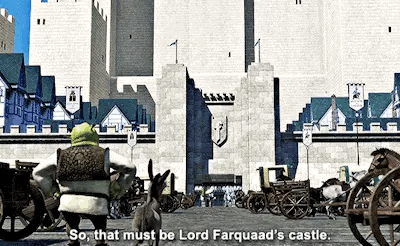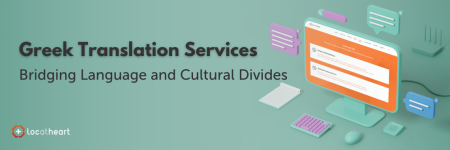Words apart: translating Japanese anime vs Western animation for children
Anime has been gaining popularity in the West since the 1990s. The current VoD trend makes Japanese productions appealing to an even broader audience, thus creating demand for a growing number of language versions.
It’s no secret that Western mainstream animation is usually made for children or for whole families. In Japan, it’s quite a different story.
So how do we tackle some of the subtitling issues when working with anime? What are the differences in translating anime vs western animation for children?
Time limitations
Western animation for children
Subtitles should be maximally concise, as children cannot read subtitles quickly.
Anime
Anime for teens and adults doesn’t have such restrictions.
In fact, sometimes shortening the subtitles is not an option. Excessive dialogue length is often a distinctive feature. Examples:
Saiki Kusuo no Psi Nan – all characters talk very fast, very often simultaneously, not infrequently their lines are artificially accelerated for humorous effect, not to mention that the characters’ thoughts are often taken into account as well.
Occultic;Nine – the main character talks very fast, which is one of his characteristics – shortening subtitles would flatten his personality.
![Translating Japanese Anime versus Western Animation for Children- Saiki Kusuo no Psi-nan screenshot - translation agency LocAtHeart Translating Japanese Anime versus Western Animation for Children [featured image] - translation agency LocAtHeart](https://locatheart.com/wp-content/uploads/2021/11/S2E18P1-600x338.png)
Touma Akechi, one of the characters from “Saiki Kusuo no Psi-nan”.
Language (difficulty level)
Western animation for children
Language must be simpler than everyday speech. It ought to be adequately adjusted, so as not to oversimplify the linguistic layer or, on the contrary, overwhelm children with a flood of words.
In dubbing there might be place for dialects, colloquialisms and speech quirks. Subtitles cannot contain too many such elements – every oddity may severely hamper the reading process.
Anime
Unless we’re dealing with anime specifically for children, we can safely assume that using everyday language would be the standard. Of course, the more specialised or characteristic the anime, the more specific or stylised the language, e.g. in sports or historical productions.
There’s no need to avoid linguistic oddities and speech quirks, so translators can use appropriate linguistic means to recreate the original language that is an important part of character building in anime.
Language (register)
Western animation for children
The rules are pretty straightforward – either all characters are on equal footing with each other, notwithstanding some level of honorification of the leader (e.g. The Smurfs, Madagascar), or children address stranger adults formally while adults address children informally.
Obviously, language in productions for children should not be foul. Any invectives or outcries need to be only mildly offensive (if offensive at all), possibly also funny.
Anime
Japanese society is very hierarchical. The difference in status is linguistically signalled by different levels of politeness and adequate honorifics added to the name or surname even between characters that are only one year of age apart. There are many special suffixes, polite verb forms (different depending on the level of politeness) and separate words. Even polite Japanese can be divided into multiple levels of politeness and humbleness.
When it comes to profanities, Japanese doesn’t really have many swear words as such, and vulgarity is often expressed by adequate verb forms. It’s important to get the gist of what kind of language a given character uses to convey their intentions and attitude in a proper way.
Humour
Western animation for children
Even the saddest, scariest or most serious productions (e.g., Corpse Bride, Coraline, Bambi or The Lion King) have an element of humour. It’s mostly situational or character-related humour, evocative and easy to understand.
Productions aimed at entire families (Shrek, The Incredibles, etc.) often have double layers of interpretation. Translators must identify what is funny for children and what is funny for the grown-ups.
Anime
Humour in anime often stems from a purely linguistic layer (puns, hyperboles, etc.). Since puns are rarely translatable word for word, especially when it comes to languages from different families, a great level of creativity is required.

Adult humour in “Shrek” (2001).
Cultural background
Western animation for children
The setting is usually universal or relatable. Even if it’s a culturally distant place, all differences are carefully chosen, then explained or shown in an uncomplicated way, or otherwise presented against a known element (e.g. Lilo & Stitch, Pocahontas or Moana).
Anime
If the plot takes place in Japan, the anime is bound to be heavily saturated with Japanese culture. And even if it’s set in a fantasy world, the cultural background will still most likely be Japanese too, at least to some extent.
Of course, a thorough research could be very helpful, but what if we don’t see a cultural nuance in the first place? And what if due to tough deadlines we don’t have time to peruse the Internet in search of explanations to some potentially meaningful actions or gestures?
Since anime is inherently Japanese, characters rarely explain what they are doing and why. They just do it and refer to it as if it were the most natural thing in the world. The scope of differences is unimaginable – it’s the language, gestures, etiquette, customs, human interactions, as well as beliefs and mentality in general, to name only a few.
Allusions to other works
Western animation for children
Productions for the youngest children are very straightforward and do not allude to any other works explicitly. Sometimes they incorporate elements of other works, but the lines between an allusion and a trope are very hazy.
The approach is slightly different in the case of animation for children, as it often abounds in little semantic treats for older audiences. Not infrequently, dialogues are saturated with popular quotes or phrases that evoke myriad extratextual associations. More often than not, this is done with almost unbelievable intricacy and subtlety, thanks to which a given production can be entertaining both for those who can identify the said references and for those who can appreciate only the literal layer of utterances.
Anime
Anime often alludes to other productions. Apart from general references to popular or classic titles, series produced by the same animation studio or based on mangas serialised in the same magazine often refer to each other as well, be it for humoristic or even marketing purposes. This is particularly strong in gag anime.
Those allusions take myriad forms and range from crypto-quotations, mentions of some concepts, or introduction of elements of a given character’s appearance, clothing or equipment, to the so-called crossovers, where characters from other productions appear in another fictional world.
It stands to reason then that translating anime requires a profound knowledge of Japanese culture and the anime industry as such. Are you looking for an expert who knows the ins and outs of it? Get in touch with us at info@locatheart.com.
This article was written by two people: Agnieszka Wąsowska and someone who wishes to stay anonymous. The co-author of the article is a translator from English working with a wide variety of texts (including subtitles to various Western and Asian productions available on VoD platforms in Poland), a linguistic reviewer and an avid enthusiast of the Japanese culture and language.

![Translating Japanese Anime versus Western Animation for Children [featured image] - translation agency LocAtHeart](https://locatheart.com/wp-content/uploads/2021/11/LAH_blog_naglowek_nowy_rozmair-3-1.png)




Leave a Reply